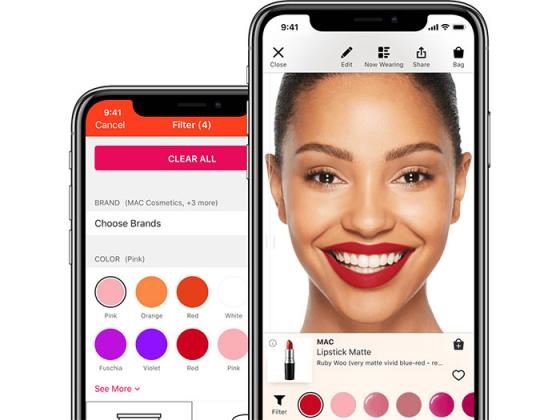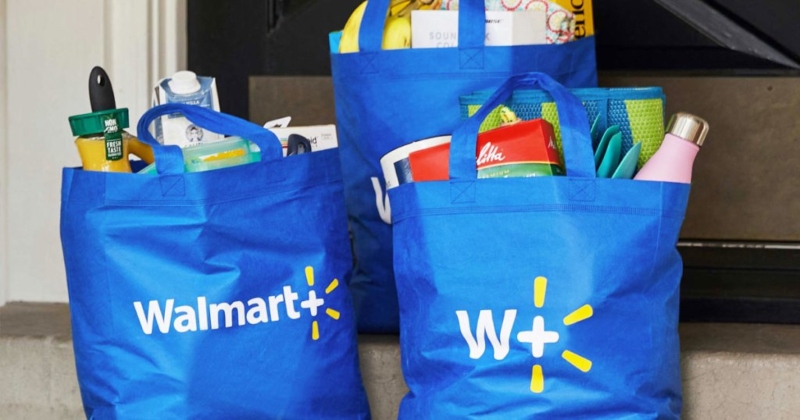Looking Back on Retail in 2020 to Predict What’s Next
Last year, we commented on macrotrends we predicted would shape the coming decade. Some of the nascent trends we pointed to then have now risen to the forefront of retail in a matter of months. As we head into the unknown of 2021, we point to four significant macrotrends that have accelerated and will continue to transform the retail industry for years to come.
Digital Enablement and Integration are Table Stakes.
The pandemic environment supercharged an already-growing E-commerce and digital solution space. Within grocery and food, delivery providers like Instacart, Amazon Fresh, Uber Eats, and Grubhub became household names. Outside of food retail, established companies rapidly improved their digital offerings as in-store shopping faced new risks and restrictions. Walmart quickly expanded delivery and pickup capabilities and launched their Walmart+ subscription service, Newegg improved their marketing content capabilities for sellers, and Amazon improved their pharmacy offering by moving prescriptions from a separate site to their standard marketplace. The E-comm explosion also brought a growth in proprietary and alternative payment platforms, epitomized by the rapid success of buy now, pay later platforms like Affirm, and MercadoPago, MercadoLibre’s payment platform.
One of the biggest change makers in digital fulfillment and enablement in 2020 was Shopify. Shopify provides merchant partners of all sizes with white-label software solutions and fulfillment support, enabling small- and medium-sized brands to ramp up E-commerce capabilities in a matter of hours, all without the risks of losing differentiation or being undercut. In Q3 of 2020 alone, Shopify nearly doubled their previous year’s revenue, growing their 2019 stock price over 200%, and with higher Black Friday merchant sales than Amazon’s third-party partners. Retailers must master the digital engagement and fulfillment capabilities that the consumer demands in order to compete in 2021 and beyond.
Consumers (Finally) Embrace AR and Contactless Technologies.
As digital tools for brands and retailers have grown in adoption and sophistication, so have consumer-facing digital tools that enhance and/or simplify the shopping experience. Once-futuristic augmented reality (AR) technology is now taking center stage in the customer journey. Brands like Warby Parker and Ulta Beauty allow customers to try on their products virtually through their smartphone or computer’s front-facing camera. Home Depot and other furniture and appliance retailers allow customers, through AR and spatial mapping, to try out where these bulky products might fit within their home. And while these technologies are not new in 2020, this year has finally seen widespread consumer trial and adoption. We expect continued adoption of AR within the grocery store, where it can bring product labels to life or help customers find products in the planogram.
The pandemic also created growth opportunities for other digital tools like contactless or digital payments, Scan & Go shopping, and using QR codes (which have become more familiar to customers through their use as a replacement for physical restaurant menus) in marketing, payment, and loyalty applications.

Ulta’s GLAMlab AR application (via Chain Store Age)
Collaborative Partnerships Capture New Customers, Grow Transaction Sizes and Enhance Brick & Mortar Productivity.
While 2020 was a difficult year to say the least, it engendered collaborative and strategic arrangements all across retail. Despite difficult conditions, the value of global M&A activity in the retail sector increased 15% year on year, headlined by major deals like 7-Eleven’s acquisition of Speedway, Apollo Global Management’s $1.75B investment in Albertsons Companies, the financial woes and eventual revival of legacy brands like Brooks Brothers and J.Crew, and consolidation in the ridesharing and food delivery space. Kohl’s launched several shop-in-shop initiatives to take advantage of their expansive physical assets. They partnered with Amazon to accept returns at all locations and piloted an Amazon Fresh grocery shop within an existing location. Kohl’s has also inked a partnership that will bring small-format Sephora shops to 200 Kohl’s locations. Meanwhile, Target announced a similar partnership bringing hundreds of Ulta shop-in-shops to its stores beginning in 2021.

Ulta shop-in-shop concept, soon available at select Target locations (via Target)
Retailers have also partnered with delivery companies to open their assortment to at-home shopping with fast delivery. For example, Instacart started to service orders from Sephora and Bed Bath & Beyond on top of their standard grocery and mass offerings. In one of the most unique examples of company collaboration, Lyft even referred its drivers to apply for work at Amazon this March, when both warehouse labor and demand for rideshare services were scarce.
Consumers Hold Companies Accountable to Community and Employee Care
In our proprietary research launched this year into Retail Brand Trust, we found that two of the biggest factors required to be considered a trustworthy brand today are demonstrated employee care and customer care. Employee care and customer care, by extension, also require caring for the wider community retailers operate in.
Leading retailers have taken steps to make purpose-driven retail front and center in their business model. This year, pandemic-relief efforts raised millions and helped consumers weather lockdowns and quarantining with senior-only hours, free delivery, and the herculean efforts of handling overstretched supply chains for months to deliver essential goods. However, addressing racial inequity has proven one of the most impactful issues of 2020, and one where many retailers have room to improve.
Across the retail industry, brands and retailers demonstrated their support for the movement towards racial equity with their messaging, pledges and donations, and commitment to equitable practices and training moving forward. Leading retailers like Sephora, Macy’s, and West Elm have taken the 15% Pledge (15percentpledge.org), committing to allocate 15% of their shelf space to products from Black-owned businesses. The 15% Pledge is an external example of the types of internal benchmarks retailers should have to ensure representation and support for brands and employees of diverse backgrounds in an increasingly socially conscious society. These examples of retailers taking action, along with the success of Certified B Corporations and values-focused DTC startups, show that building values into the business model can not only be coexistent but synergistic with a successful enterprise.
Retailers Will Navigate a Wave of Change into 2021
The trends above are underpinned by retailer resourcefulness and responsiveness in the face of sweeping pandemic-fueled disruptions. And while these shifts have taken hold during a year unlike any other, the longevity of the global pandemic crisis and the related changes in behaviors and attitudes suggests that continued innovation will rule the year ahead. As we enter a path to recovery, retailers need to consider how they will win with a changed consumer in a post-COVID world.
McMillanDoolittle can help identify the aspects of your past that must be protected, the quick-win adjustments for now, and long-term growth strategies for the future. Learn more about our comprehensive portfolio of Pandemic Recovery services here or simply contact us to learn more.

No Comments